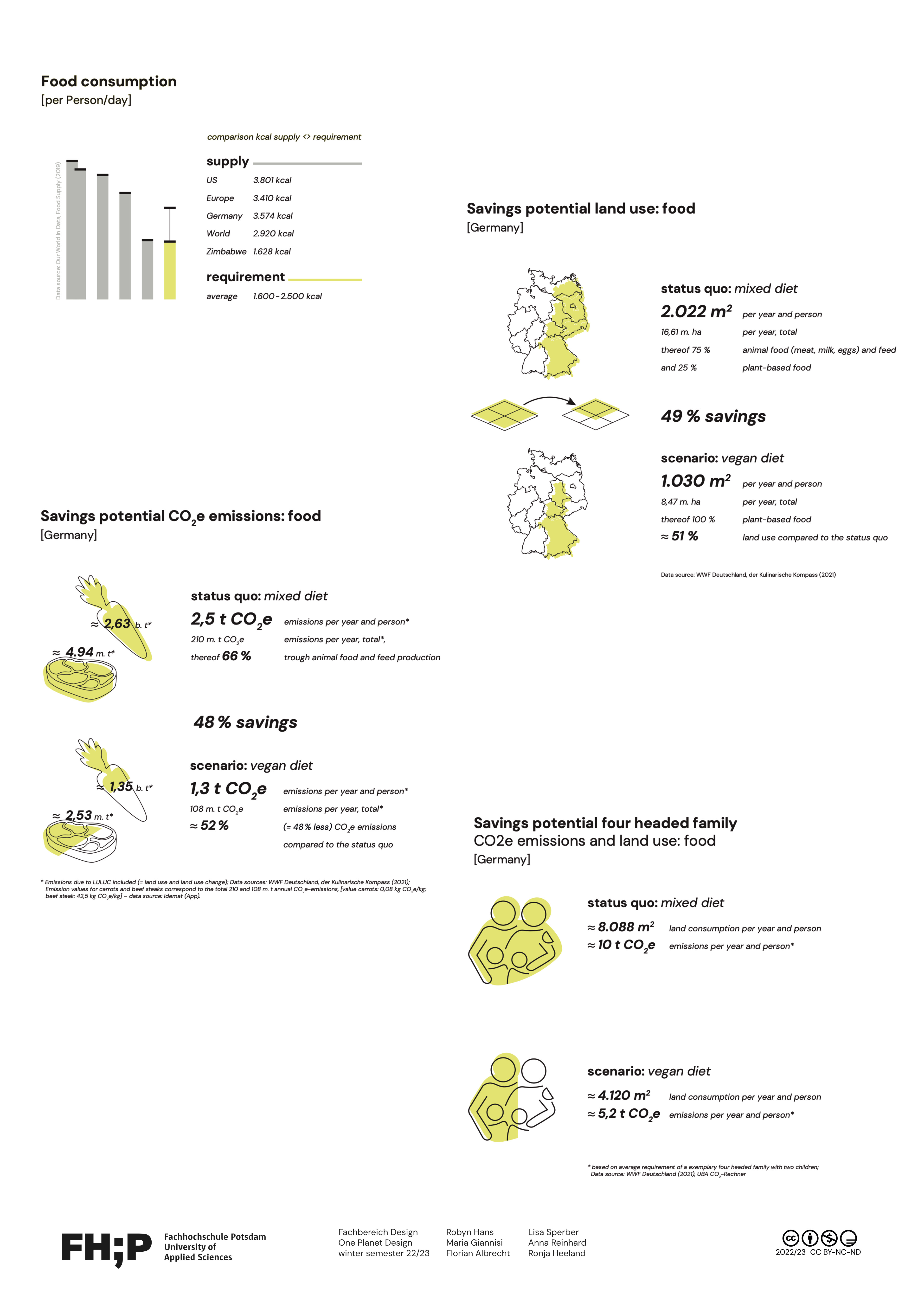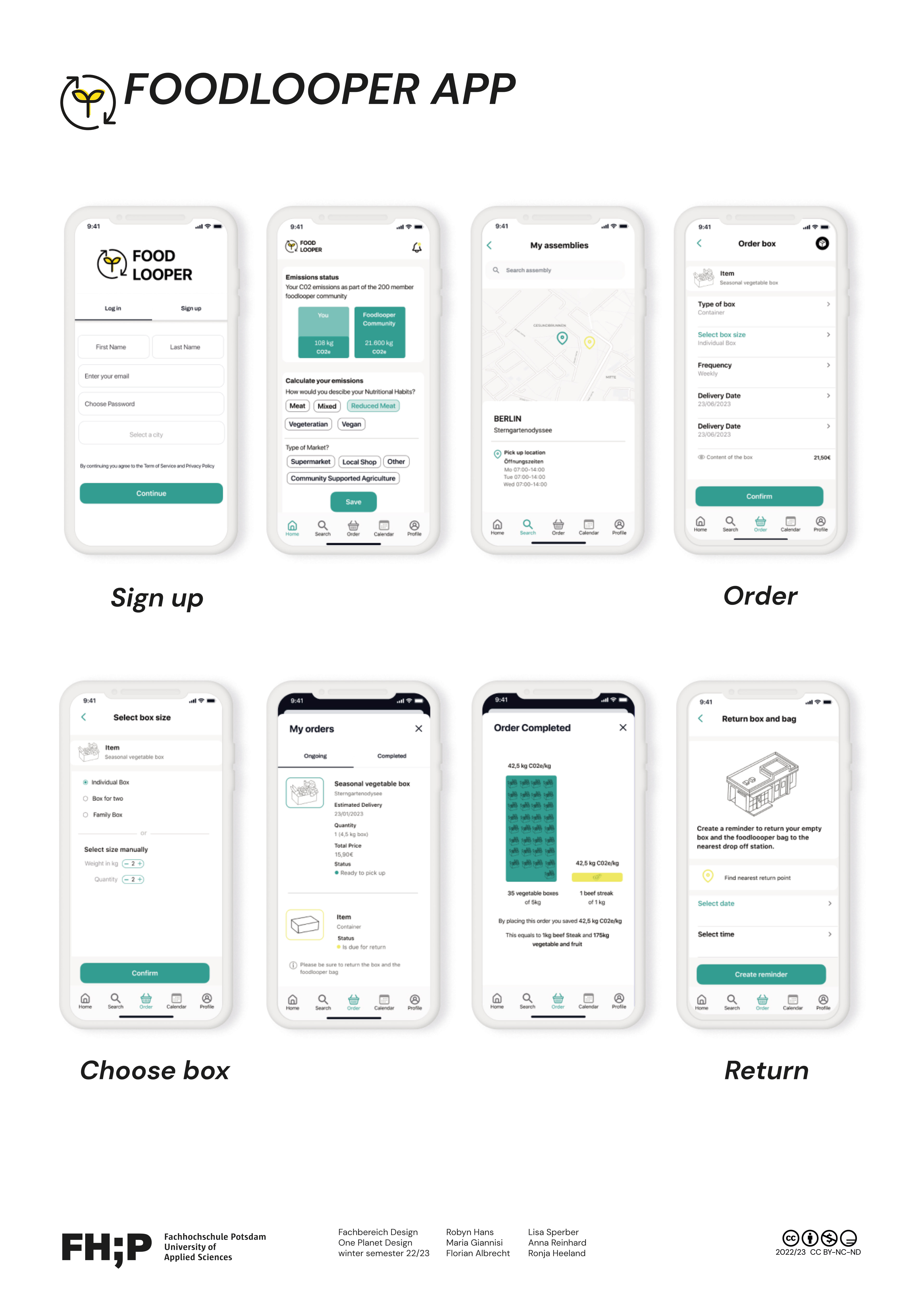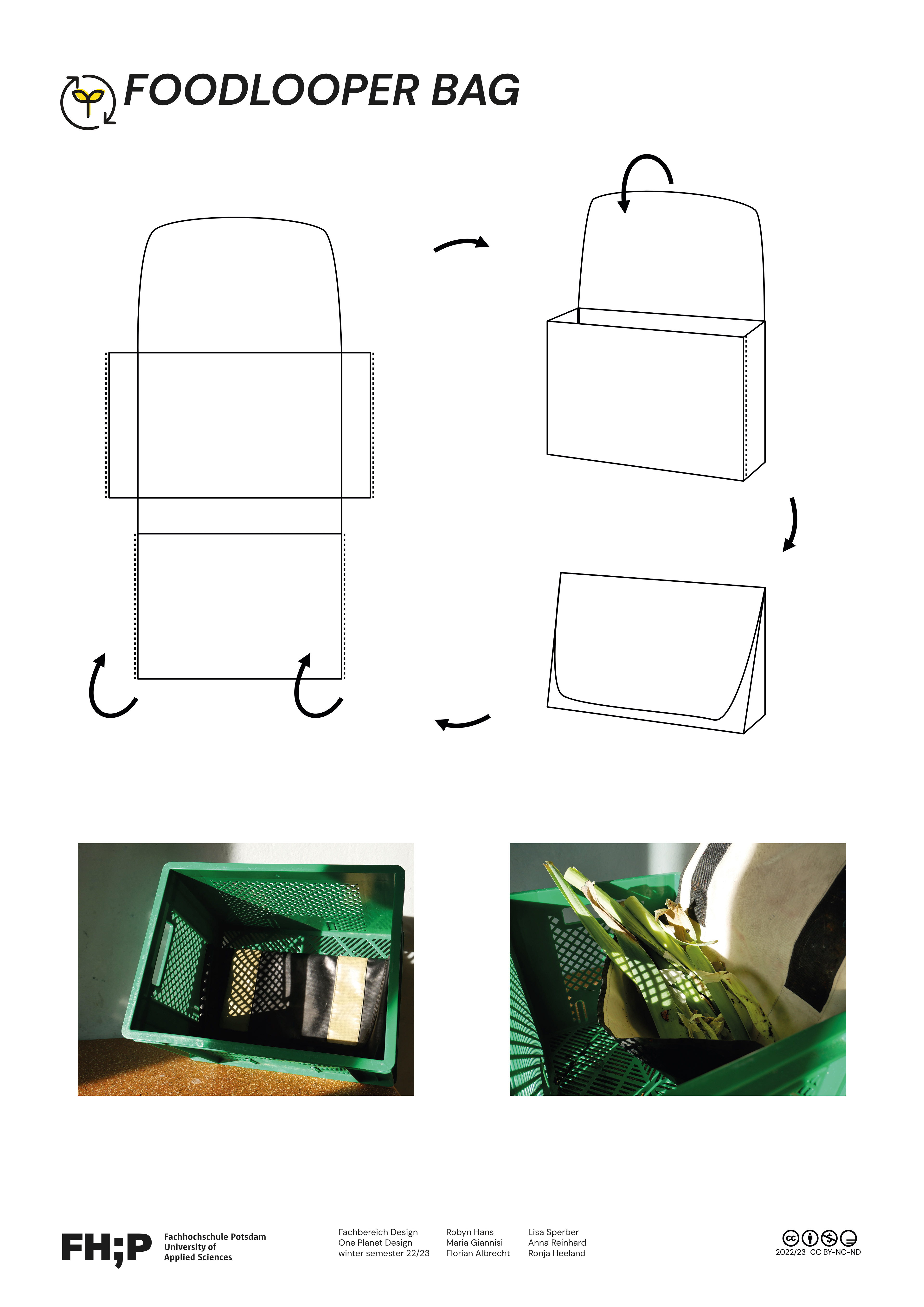2023
Der globale Lebensmittelsektor ist für etwa 26 % der weltweiten Treibhausgasemissionen verantwortlich. Unsere Mischkost, die überwiegend tierische Produkte enthält, verbraucht nicht nur viel Ackerland, sondern stößt auch eine Menge CO2e aus.
In unserem linearen System landen Obst- und Gemüseabfälle in der Mülltonne, obwohl sich daraus wertvoller Kompost herstellen ließe. Genau an dieser Stelle setzt Field to Field an. Das System unterstützt die Wiederverwertung von Lebensmittelresten und agiert zwischen Konsument und Produzent. Über die Foodlooper-App kann frisches Obst und Gemüse aus der Region ganz einfach zu einer Abholstation bestellt werden und unterstützt so die lokale Landwirtschaft. Dank des Foodlooper-Bags können die Abfälle mühelos an die Station und anschließend an die Landwirte zurückgegeben werden.
Field to Field fördert den Verzehr frischer, lokaler Lebensmittel und trägt zur Bodenverbesserung bei. Wir können aktiv helfen, das Klima zu schützen, indem wir unsere Böden als wertvolle CO2-Speicher erhalten.
In unserem linearen System landen Obst- und Gemüseabfälle in der Mülltonne, obwohl sich daraus wertvoller Kompost herstellen ließe. Genau an dieser Stelle setzt Field to Field an. Das System unterstützt die Wiederverwertung von Lebensmittelresten und agiert zwischen Konsument und Produzent. Über die Foodlooper-App kann frisches Obst und Gemüse aus der Region ganz einfach zu einer Abholstation bestellt werden und unterstützt so die lokale Landwirtschaft. Dank des Foodlooper-Bags können die Abfälle mühelos an die Station und anschließend an die Landwirte zurückgegeben werden.
Field to Field fördert den Verzehr frischer, lokaler Lebensmittel und trägt zur Bodenverbesserung bei. Wir können aktiv helfen, das Klima zu schützen, indem wir unsere Böden als wertvolle CO2-Speicher erhalten.
Projekt von Anna Reinhard, Florian Albrecht, Ronja Heeland, Robyn Hans, Maria Giannisi & Lisa Sperber
The global food sector is responsible for about 26% of global greenhouse gas emissions. Our mixed diet, which includes predominantly animal products, not only consumes a lot of arable land, but also emits a lot of CO2e.
In our linear system, fruit and vegetable scraps ends up in the garbage can, even though valuable compost could be made from them. This is precisely where Field to Field comes in. The system supports the recycling of food leftovers and acts between consumer and producer. Via the foodlooper app, fresh fruit and vegetables from the region can easily be ordered to a pick-up station, thus supporting local agriculture. Thanks to the Foodlooper bag, the waste can be returned to the station and then to the farmers without any effort.
Field to Field encourages the consumption of fresh, local food and contributes to soil improvement.
We can actively help to protect the climate by preserving our soils as valuable CO2 reservoirs.
In our linear system, fruit and vegetable scraps ends up in the garbage can, even though valuable compost could be made from them. This is precisely where Field to Field comes in. The system supports the recycling of food leftovers and acts between consumer and producer. Via the foodlooper app, fresh fruit and vegetables from the region can easily be ordered to a pick-up station, thus supporting local agriculture. Thanks to the Foodlooper bag, the waste can be returned to the station and then to the farmers without any effort.
Field to Field encourages the consumption of fresh, local food and contributes to soil improvement.
We can actively help to protect the climate by preserving our soils as valuable CO2 reservoirs.
Project by Anna Reinhard, Florian Albrecht, Ronja Heeland, Robyn Hans, Maria Giannisi & Lisa Sperber


